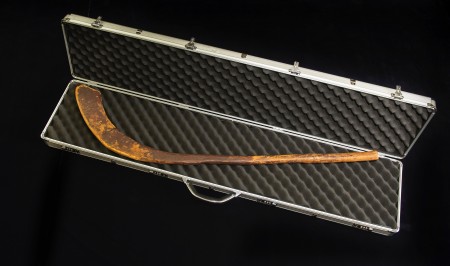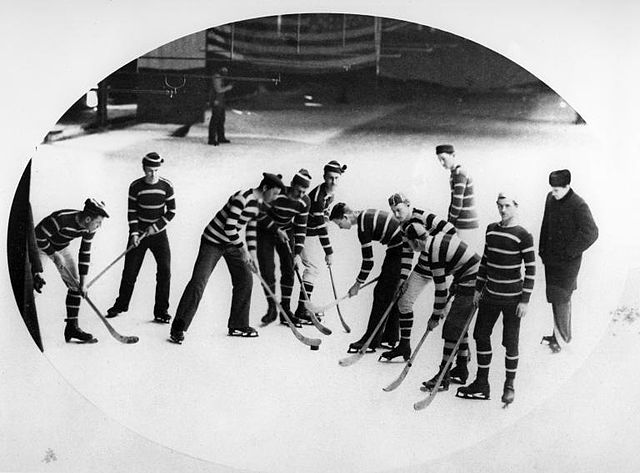$300,000 for a really old hockey stick
The world’s oldest-known hockey stick will stay in Canada after all.

Rugged and unassuming. The world’s oldest-known hockey stick. Photo: Canadian Museum of History, used by permission
According to a press release from the Canadian Museum of History, this cultural heirloom, known as the Moffat stick:
…was hand hewn in the 1830s in Cape Breton, Nova Scotia, from a single piece of sugar maple.
The Museum purchased the artifact from Mark Presley of Nova Scotia through its donor-supported National Collection Fund. It will be featured in the Canadian History Hall, opening on July 1, 2017.
You can see a video of the stick and hear more from the seller in this coverage from the Ottawa Citizen.
Though the price may raise eyebrows, the purchase and prominence planned for this item should come as no surprise. We’re talking hockey and Canada, after all. Also, 2017 is also Canada’s 150th birthday. No less than Stephen J. Harper managed to carve out time while serving as Prime Minister to write a book on that national passion: “The Great Game: The Forgotten Leafs and the Rise of Professional Hockey.”
The seller was Mark Presley of Nova Scotia, who bought the historic stick in 2008 for $1,000. Presley offered the stick on eBay for a week last June, but pulled the item, according to coverage from the Herald News:
The item was viewed about 1,000 times, but there were only three bids, from two individuals. The opening bid was $50,000 and the highest was $55,500, far lower than the last time he had it up for auction.
Presley put the stick on eBay for 10 days in March. Offers reached $100,000 and the listing garnered almost 40,000 views and 72 bids.
He pulled the listing 24 hours before it was set to end, after a national museum expressed concern that the stick would leave Canada.
Here’s more back story from the Canadian Museum of History press release:
The stick was owned by the Moffatt family from the time of its creation until the early 1980s. It was then given to the owner of a barbershop in North Sydney, Nova Scotia, where it was displayed until purchased by Mr. Presley in 2008.
Genealogical evidence and oral histories provided by the Moffatt family and members of Cape Breton’s historical community were the first steps in tracing the story of the stick. Its authenticity and provenance is further supported by scientific analysis of its wood, wear and paint.
Mr. Presley’s passion for culture and heritage led him to research and document the stick’s age and provenance. He was told by Charlie Moffatt, then 92 years old, that the stick was used by his grandfather in hockey games on Pottle Lake, near North Sydney.
At Mr. Presley’s request, the stick was analyzed by experts at Mount Allison University in Sackville, New Brunswick. Their results indicated that the wood used to make the stick was harvested in Cape Breton in the mid-to late 1830s — making it the oldest hockey stick known to exist. The Museum purchased the short-handled, long-bladed stick for $300,000.
The curvaceous Gatineau museum across the river from Parliament Hill is perhaps more familiar to many as the Canadian Museum of Civilization. As of 2013, it was re-named and re-purposed to celebrate Canadian history. Since history is often subject to debate that change prompted considerable discussion in museum and cultural circles.
The museum itself, by various names, dates back to 1856.

Canadian Museum of History, formerly called Canadian Museum of Civilization, in Gatineau. Image by Andrevruas, Creative Commons

Photograph, Hockey match, Crystal Palace skating rink, Montreal, QC, 1881, George Charles Arless. Image: Creative Commons.
Tags: canada, culture, heritage, history, hockey, Moffatt stick, sport, Stephen Harper







